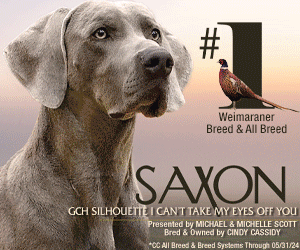New pet owner survey suggests common myths fueling significant gap in prevention of deadly parasite for U.S. dogs and cats
 Banfield Pet Hospital – the nation’s leading provider of preventive veterinary care and part of the Mars Veterinary Health family of practices – surveyed 1,000 U.S. dog and cat owners and analyzed its pet medical record database to gain insights on the state of heartworm prevalence in pets, including seasonal and local trends.
Banfield Pet Hospital – the nation’s leading provider of preventive veterinary care and part of the Mars Veterinary Health family of practices – surveyed 1,000 U.S. dog and cat owners and analyzed its pet medical record database to gain insights on the state of heartworm prevalence in pets, including seasonal and local trends.
According to the American Heartworm Society, more than a million pets in the U.S. have heartworm – a serious and potentially fatal parasite for dogs and cats that is contracted from mosquitos – and cases are on the rise.
Despite the growing prevalence, new survey findings from Banfield reveal nearly 40% of dog and cat owners don’t believe their pet is at risk of getting heartworms and nearly 30% said their pet is not on heartworm prevention. Further, 21% of pet owners don’t believe the mosquitos in their state carry the parasite, despite heartworm cases being diagnosed in all 50 states.
“Research has shown rates of heartworm in pets have continued to trend upward nationwide, despite prevention being generally safer, easier and less expensive than treating an existing infection,” said Dr. Alea Harrison, chief medical officer of Banfield Pet Hospital. “As we continue to strive towards our purpose – A Better World for Pets – Banfield is committed to ‘chasing zero’ infections of this 100% preventable and life-threatening parasite in partnership with pet owners and the veterinary industry.”
Mosquitos might be more noticeable in the summer, but risk persists all year long
Some pet owners might think heartworm is only a risk to their pets during the warmer months; however, Banfield’s data underscores the importance of year-round prevention. Rates of heartworm diagnoses in pets seen at Banfield in 2023 stayed the same across all four seasons, with thousands of pets diagnosed in spring, summer, fall and winter.
When asked about seasonality of heartworm and prevention practices:
- 41% of surveyed pet owners said they believe heartworm is only a risk during part of the year
- 51% skip year-round prevention, with 18% only using heartworm prevention for their pets during spring and summer months
States with the highest increases and decreases in rates of heartworm
While it can’t be said for certain where a pet contracted heartworm given things like travel or out-of-state adoption, below are the states with the highest increases in rates of heartworm in the past five years according to Banfield’s data. Notably, states including Washington and Oregon made the top 10 list, which according to the American Heartworm Society are areas with historically low heartworm rates.
- Delaware – 299% increase
- Montana - 140% increase
- Nevada - 101% increase
- Idaho – 81% increase
- Utah – 57% increase
- Washington – 55% increase
- Arizona – 52% increase
- Iowa – 35% increase
- Oregon – 32% increase
- Rhode Island – 30% increase
Not every state has seen an increase in the rate of pets diagnosed with heartworms. According to Banfield’s data, Connecticut saw the largest decrease (-46%) in heartworm diagnosis over the past five years, followed by:
- Indiana – 38% decrease
- Wisconsin – 38% decrease
- Arkansas – 34% decrease
- Louisiana – 31% decrease
- Georgia – 29% decrease
- Tennessee – 28% decrease
- Kansas – 23% decrease
- Ohio – 22% decrease
- Texas – 22% decrease
The importance of prevention
In the past five years, Banfield saw a 47% increase in felines diagnosed with heartworms. This is particularly concerning for a number of reasons, including:
- There is currently no safe treatment to remove or kill adult heartworms in cats, so infected cats can only be treated supportively and symptomatically.
- In cats, heartworm infections cause a syndrome known as heartworm associated respiratory disease (HARD).
Despite the increased risks for cats, only 22% of surveyed cat owners are aware there are no safe treatment options for felines.
Thirty-two percent of surveyed dog owners said they feel neutral or unconcerned about their dogs getting heartworms given it’s treatable. And while there are treatment options available for dogs, new peer-reviewed research leveraging Banfield data reinforces why prevention is much more preferrable than treatment. The study found dogs that tested positive and received treatment for heartworm infection had higher risks for right-sided heart failure, left-sided heart failure, and cardiomyopathy. You can read more about these findings at Banfield Exchange.
Short URL: http://caninechronicle.com/?p=284188
Comments are closed












